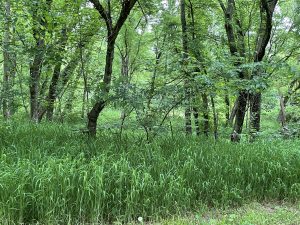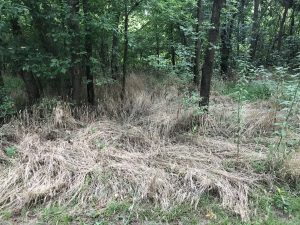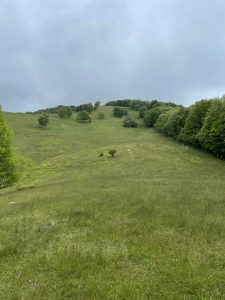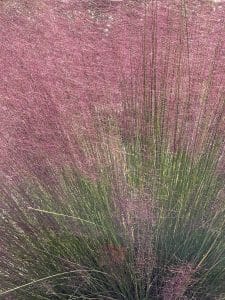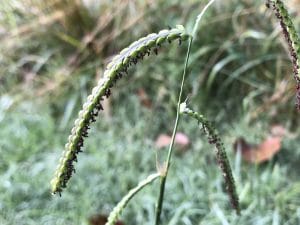“The grass withers and the flowers fade, but the Word of our God stands forever.”*
This is the opening phrase that my pastor uses every Sunday before he begins his teaching. I was pondering this scripture as I walked the pathway by my house. One of the first changes the waning summer season displays is the color of the grasses. In the spring, they are a lush, bright green carpet framing my walk and throughout the understory in the woods. In mid-summer, they offer shade and protection to the animals that scurry in between them. But as the heat of summer takes hold, the grasses begin their slow color change to light cream and russet. I wonder if the animals notice a taste difference as the summer moves into fall. Or if the changing texture can be felt by the deer when they bed down for the night.
Over the years, I’ve come to love the variety of wild grasses that grow along my piedmont and mountain walks. I enjoy watching them emerge slowly, then finally burst into bloom and ultimately set seed. Each one is unique in its color and texture. Because they are so abundant and prevalent, I wonder if we take them for granted. Yet, the hillside vistas and backdrop for our wildflowers and trees would be very different if you removed them from our landscapes. At one point in scripture, Jesus talks about this.
“And why do you worry about clothes? See how the flowers of the field grow. They do not labor or spin. Yet I tell you that not even Solomon in all his splendor was dressed like one of these. If that is how God clothes the grass of the field, which is here today and tomorrow is thrown into the fire, will he not much more clothe you—you of little faith?”**
One of my favorite places to walk is a hillside cattle pasture high in the mountains of western North Carolina. The wind ripples the grass, making it look like the mane of a lion or as if little animals were running underneath. It softens the steep rise of the mountain, so it doesn’t seem nearly as imposing to the hiker. “He covers the heavens with clouds, provides rain for the earth, and makes the grass grow in mountain pastures.”***
I’m quite fond of the wispy, tufted heads of the cultivated grasses that we plant in our gardens and along our walkways. This is probably due to my childhood experience with two enormous clumps of pampas grass that grew in our backyard. When the bloom first emerges from inside the grass, it’s a lovely deep crimson as soft as silk. Over time, it changes to a cloud of fluffy cream blossoms that sway in the passing wind. The grass itself is not terribly inviting for exploration. It has sharp edges and is not good for hiding in unless you have long sleeves and pants. Along one of my walks, a planting of ornamental grass casts a lovely purple cloud of blossoms. It’s beautiful viewed up close or at a distance.
My favorite time of year is when the grasses put forth their seeds. You wouldn’t notice many of these tiny missionaries unless you are looking closely at their progression over time. There is often only a subtle change in the shape or color of the seed head.
Field grass is so common that we often take it for granted. If you take time to notice the different types of grass on your walks, you will be rewarded. The same can be said of people. They’re all around us. But it is wise to look carefully to enjoy the differences in appearance and walking style as well as the expressions on people’s faces. People are indeed the lilies of the field. They adorn the fields of His making. Let’s set out to enjoy them as much as we do the wildflowers.
“You will know that your children will be many, and your descendants like the grass of the earth.”
Job 5:25 NIV
*Isaiah 40:8 NLT
**Matthew 6:28-34 NIV (Italics mine)
*** Psalm 147:8 NLT
